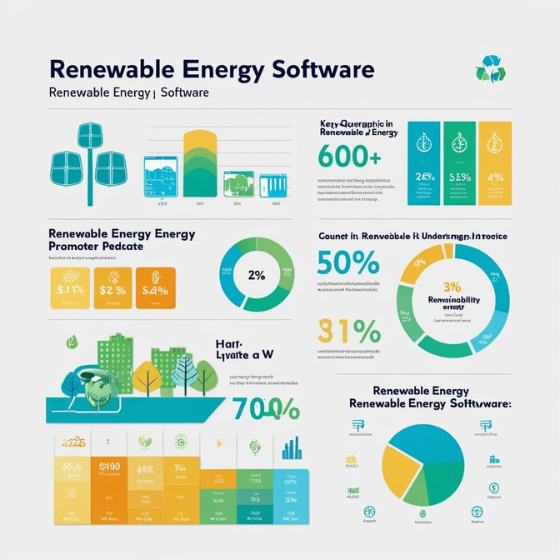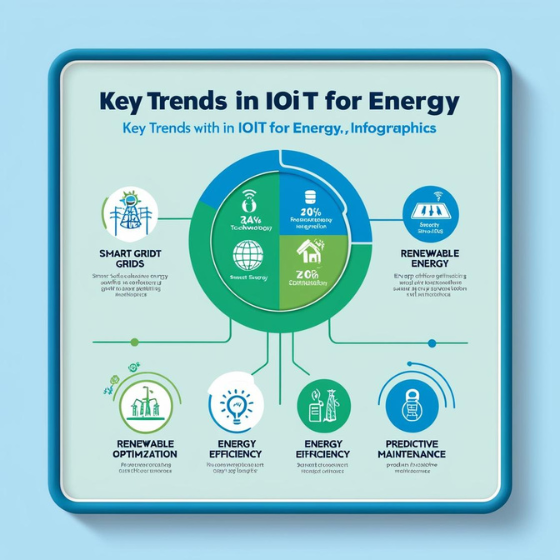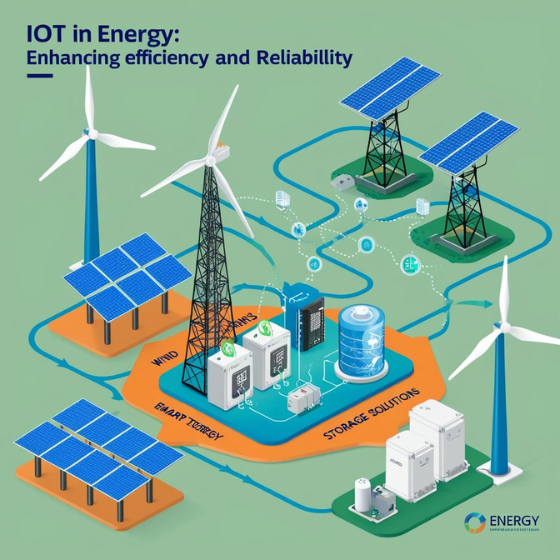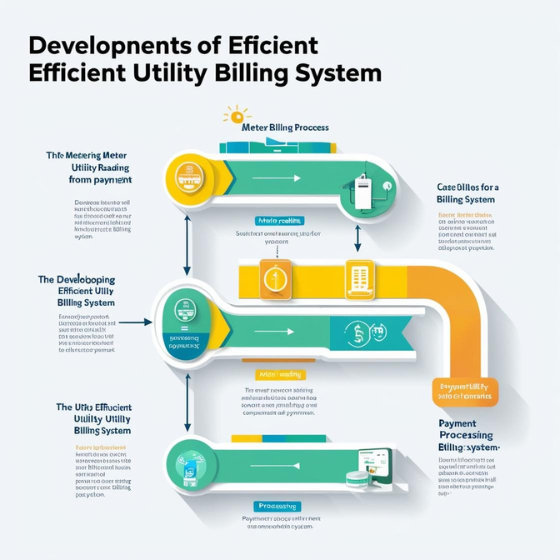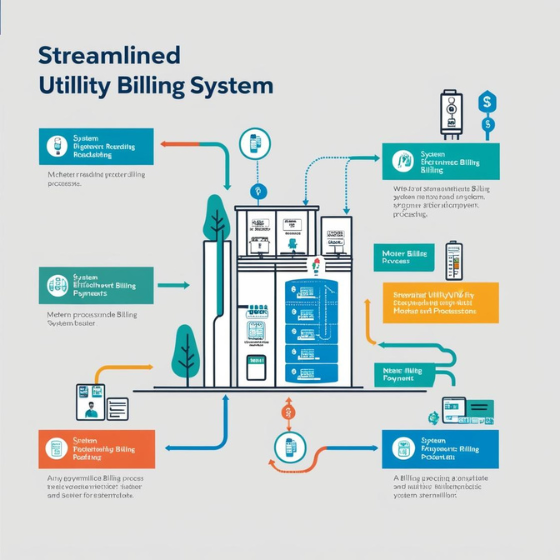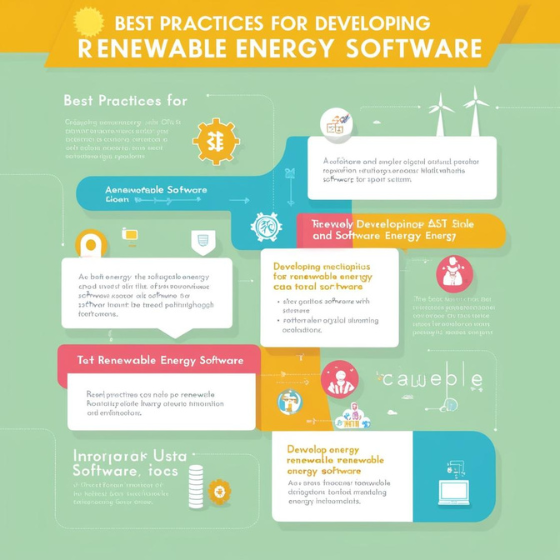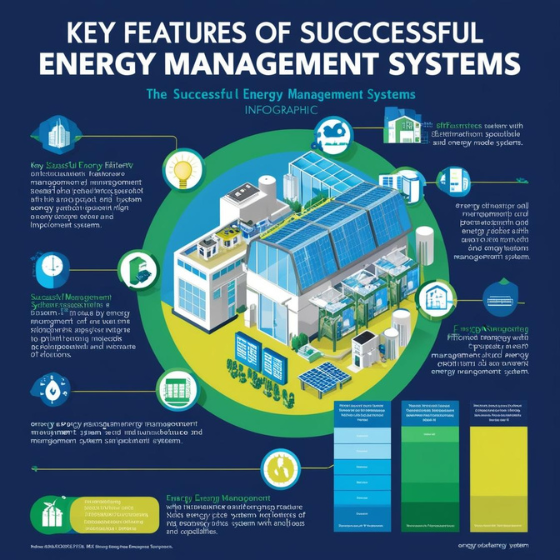Introduction to Renewable Energy Software
As the global push for sustainability accelerates, renewable energy has emerged as a cornerstone of efforts to reduce greenhouse gas emissions and combat climate change. Yet, managing renewable energy sources efficiently requires advanced technology. This is where renewable energy software plays a pivotal role, enabling organizations to maximize the use of green energy, optimize costs, and ensure smooth integration into existing energy systems.
This blog explores how renewable energy software is driving sustainability, the features that make it indispensable, and its transformative impact across industries.
Promoting Sustainability with Renewable Energy Software
The global energy landscape is undergoing a major shift. According to the International Renewable Energy Agency (IRENA), renewable energy could account for 90% of global electricity by 2050. However, challenges such as variability in solar and wind energy, grid integration, and data management necessitate smart solutions.
Renewable energy software helps address these challenges by:
- Streamlining energy generation and distribution.
- Providing real-time insights into energy performance.
- Optimizing storage and consumption.
Top Features of Renewable Energy Software Solutions
1. Real-Time Monitoring and Analytics
Renewable energy software offers real-time data on energy generation, consumption, and performance.
- Benefit: Identifies inefficiencies, enabling proactive adjustments.
- Example: Monitoring solar panels to detect performance dips caused by shading or maintenance issues.
2. Predictive Maintenance
By using AI and machine learning, the software predicts potential equipment failures before they occur.
- Benefit: Reduces downtime and maintenance costs.
- Example: Wind turbines equipped with sensors alert operators of wear and tear, allowing timely repairs.
3. Energy Storage Optimization
Renewable energy software ensures the efficient use of battery storage, particularly during periods of low energy generation.
- Benefit: Reduces reliance on the grid and maximizes renewable energy utilization.
4. Integration with Smart Grids
The software facilitates seamless integration of renewable energy sources with smart grids, balancing supply and demand in real time.
- Benefit: Stabilizes energy supply and prevents outages.
5. Carbon Footprint Tracking
Advanced software tracks and reports carbon emissions savings, providing transparency for sustainability goals.
- Benefit: Demonstrates compliance with environmental regulations and boosts corporate sustainability credentials.
How Renewable Energy Software Promotes Sustainability
1. Maximizing Energy Efficiency
The software minimizes energy waste by optimizing generation, storage, and consumption.
- Example: Solar farms use software to adjust panel angles for maximum sunlight capture, increasing efficiency by up to 20%.
2. Accelerating Transition to Green Energy
Renewable energy software simplifies the adoption of renewables by making them more accessible and cost-effective.
- Example: Businesses can monitor and control renewable energy assets via centralized dashboards, ensuring smoother transitions.
3. Enabling Energy Sharing and Microgrids
Communities and businesses can use the software to manage local energy networks, such as microgrids, and share surplus energy.
- Benefit: Reduces grid dependence and enhances energy resilience.
4. Supporting Sustainability Reporting
Companies can generate detailed reports on energy savings and emissions reductions, aligning with global sustainability frameworks like ESG (Environmental, Social, Governance).
Industries Benefiting from Renewable Energy Software
1. Utilities and Energy Providers
Utilities use software to manage renewable assets like wind farms, solar plants, and hydroelectric facilities efficiently.
- Impact: Improved grid stability and optimized energy distribution.
2. Commercial Real Estate
Buildings equipped with renewable energy sources like rooftop solar panels use software to track energy usage and reduce costs.
- Impact: Lower operational expenses and improved energy efficiency ratings.
3. Manufacturing
Factories with high energy demands use renewable energy software to balance renewable and grid power, reducing costs and emissions.
4. Agriculture
Farmers leverage the software for irrigation systems powered by solar or wind, ensuring sustainable practices.
Case Study: Renewable Energy Software in Action
Company: A global data center provider.
Challenge: High energy consumption leading to unsustainable operational costs and carbon emissions.
Solution: The company implemented renewable energy software to manage its solar farms and optimize battery storage systems.
Results:
- Achieved a 40% reduction in carbon emissions.
- Reduced energy costs by 25% through storage optimization and peak-demand planning.
- Improved transparency in sustainability reporting for stakeholders.
Overcoming Challenges in Renewable Energy Adoption
While renewable energy software offers immense benefits, implementation can come with hurdles:
1. High Upfront Costs
- Solution: Look for government subsidies or financing options for renewable technology investments.
2. Integration with Legacy Systems
- Solution: Work with experienced providers who offer scalable and interoperable software solutions.
3. Data Management Complexity
- Solution: Use cloud-based software that can handle large datasets while ensuring real-time processing.
The Future of Renewable Energy Software
1. AI-Driven Optimization
Artificial intelligence will enable more precise predictions for energy generation and consumption, improving efficiency.
2. Blockchain for Energy Transactions
Blockchain technology will allow secure and transparent energy trading, particularly in peer-to-peer networks.
3. Virtual Power Plants (VPPs)
Software will enable decentralized energy systems where small-scale producers like homes or businesses contribute to a collective power grid.
4. IoT Integration
IoT devices will provide more granular data, further enhancing software capabilities for monitoring and optimization.
Conclusion: Renewable Energy Software for a Greener Future
Renewable energy software is more than just a technological tool—it’s a catalyst for sustainable growth. By maximizing efficiency, integrating renewables with existing systems, and supporting carbon reduction goals, it empowers businesses to lead the charge toward a greener future.
The adoption of renewable energy software is not just an investment in technology—it’s an investment in a sustainable tomorrow.
Ready to take the next step in sustainability? Contact Sodio to discover cutting-edge renewable energy software solutions designed to meet your unique needs.
